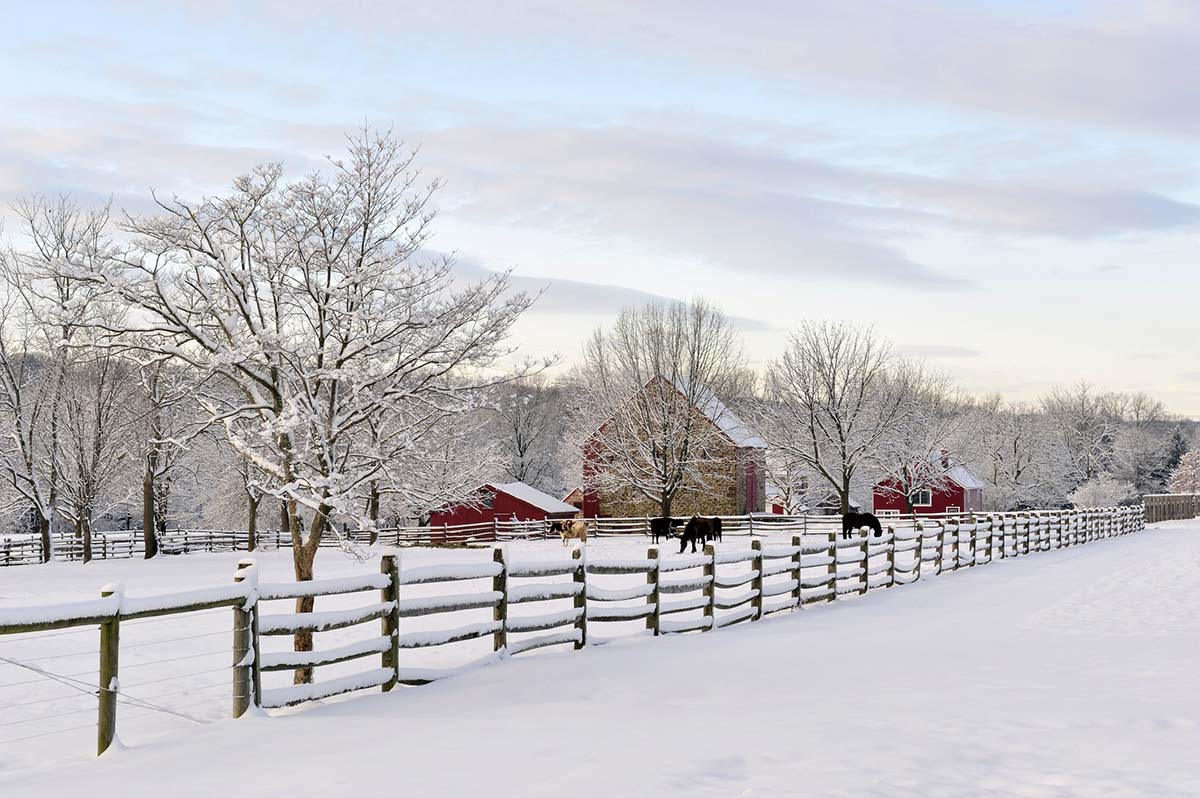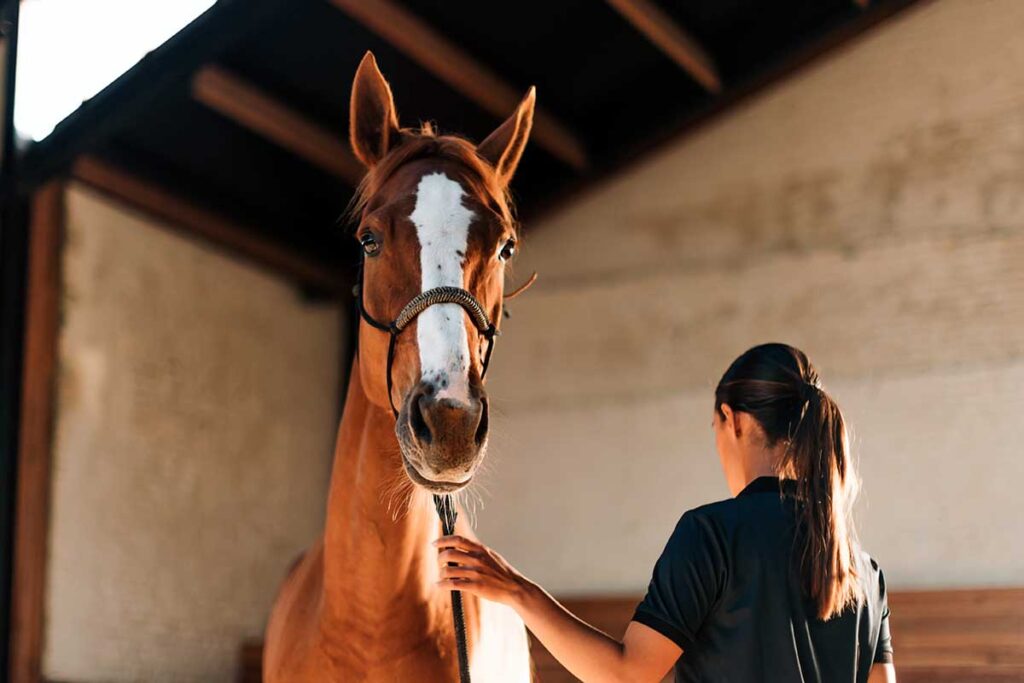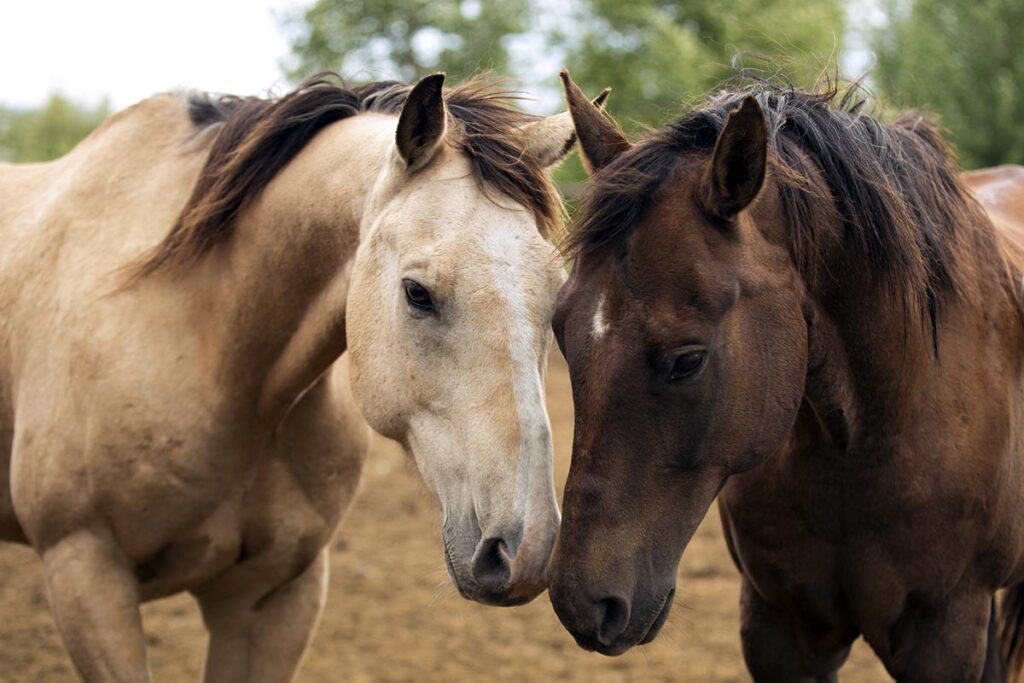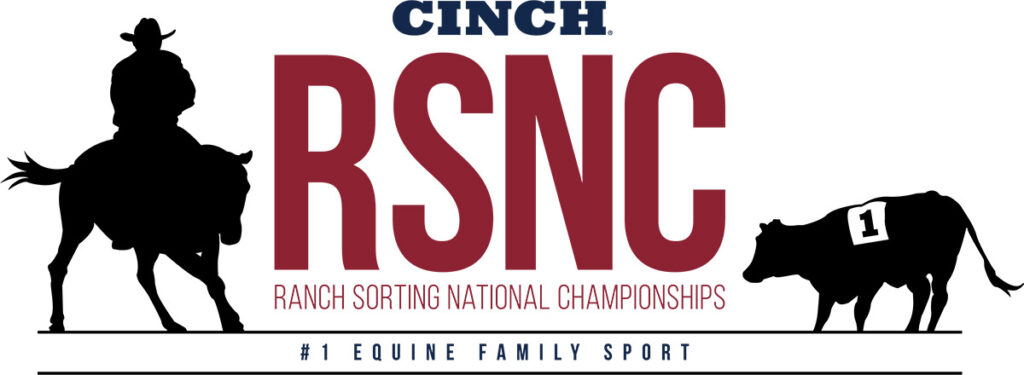Winter can be challenging for anyone. You have to worry about layering, preventing plants and pipes from freezing, and clearing snow from passageways. For a horse owner like yourself, it can be particularly trying for your horses, your equipment, and your patience. If you have a senior horse, live in a location that gets intense winter weather, or just want to keep everything in its place during a few months off, read on. You can use this pre-winter checklist to ensure you have every aspect covered before the cold sets in.
Winterize Gear
Before the winter season starts, clean and condition your tack thoroughly to prevent damage and maintain its longevity.
- Clean thoroughly: Use a leather cleaner to deep-clean your tack, including bridles, saddles, and reins. This removes any dirt or sweat buildup that’s accumulated during the riding season.
- Condition leather: After cleaning, use a leather conditioner to keep the leather supple and prevent cracking. This maintains your tack’s quality and extends its life span.
- Keep tack dry: Store your tack in a dry, cool place to prevent mold and mildew growth. Make sure to store your tack away from direct sunlight and heat sources. Even in the wintertime, the sun through a window can damage tack.
- Switch to bags and containers: If you have bags, use them for your saddle and headstall. If you store blankets in a location prone to inviting winter visitors, use bags, tubs, or other containers that keep mice and other pests away.
- Pack away summer gear: Summer sheets, fly masks, and other gear you don’t plan to use through the winter can be packed away into a rodent-proof container.
Watch: How To Clean a Saddle
Winterize Your Environment
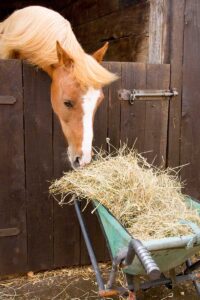
Pre-winterizing your barn ensures a healthy environment for your horse. This is especially important given they’re likely to spend more time indoors. Some horse-related ailments such as scratches or heaves can also be reduced with some environmental care.
- Clean and disinfect living areas: Clean and disinfect stalls, walls, and surfaces in your barn to prevent the growth and spread of bacteria and viruses.
- Fix leaks: Check for leaks in your barn roof, walls, or windows, and fix them to prevent water from seeping into your barn and causing dampness and mold.
- Insulate or check insulation: Insulate your barn walls and ceilings to help retain warmth during the winter season, which will keep your horse warm and comfortable.
- Stock up: Stock up on supplies such as bedding, hay, and feed before winter to ensure you aren’t scrambling to find what you need when you need it. Typically, you have more affordable options if you stock up versus purchase it as you need it.
- Winterize trailer: Clean and put your trailer away if you don’t plan to use it. Clean any shavings, poop, or other debris, and ensure all windows are closed to reduce mildew and water damage.
- Prepare for ice: Prepare or stock heat strips or heated waterers, which will keep you from needing to break ice.
Safety First
Take these steps to improve safety and address hazards unique to the cold season.
- Put away hay: While it’s best to keep your hay covered or in a shed all year, in the winter you want to avoid hay getting wet and molding. Haystacks should never be kept in the same place as horses; they can combust.
- Improve footing: Add dirt or sand to dug-out areas. Consider adding stall mats in high-traffic areas that are prone to mud and muck.
- Add gutters and downspouts: Divert water from areas your horse hangs out, as well as roads and other walkways to reduce pooling and mud.
- Tarp or spread manure piles: To avoid runoff when the rain or snow comes, cover manure piles or spread it to allow it to begin to decompose.
Winterize Your Horse
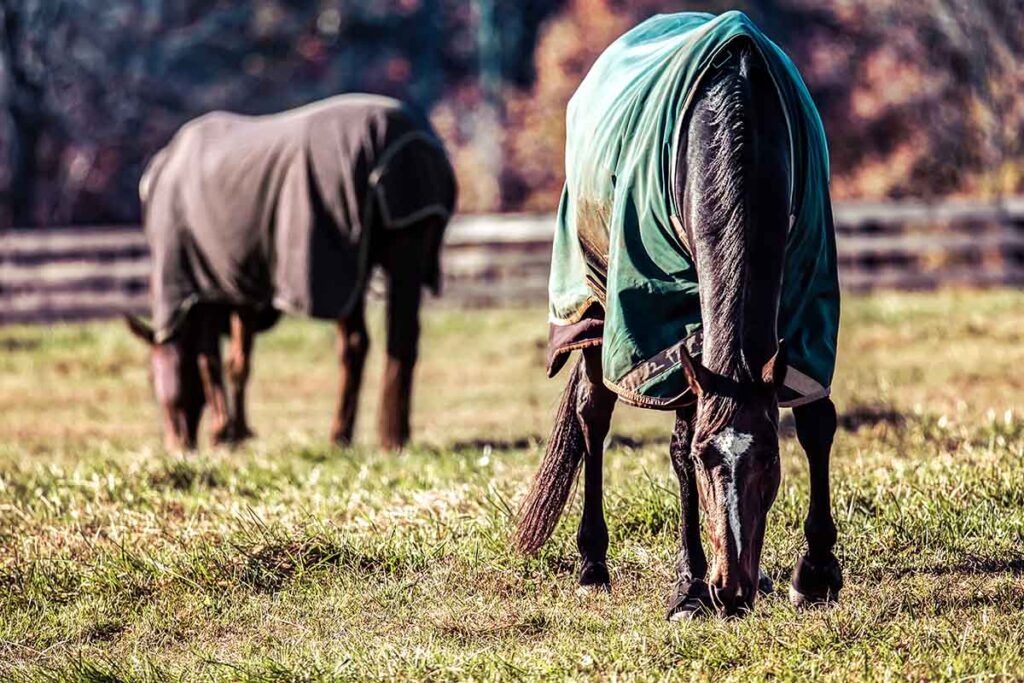
Regular veterinary care is essential to keeping your horse healthy throughout the winter. some basic checks and maintenance ensure your horse goes into winter in good condition.
- Prep blankets: If your horse will need blankets through the winter, make sure they’re clean, and repair any damages.
- Check teeth: Oral health can impact your horse’s ability to maintain a healthy weight and eat pain-free. If you haven’t already, before the end of the riding season, have your horse’s teeth checked and floated if necessary.
- Prep feet: If you plan to pull shoes, take them off earlier so your horse’s feet have time to adjust to the hard ground. Talk to your farrier about traction options if your horse stays shod.
- Administer fall vaccines: Have your veterinarian out to administer booster vaccines in the fall.
- Vet check: A fall vet check will allow your veterinarian to assess your horse’s condition going into the winter. They can recommend a feeding and blanketing approach to keep your horse in good condition. This is especially helpful for senior horses.
- Monitor weight: If your horse is already at a healthy body condition, aim to keep him that way. Be sure to adjust your horse’s diet to accommodate the extra energy he will expend to maintain his body heat.
- Create an emergency plan: Severe weather happens. To be as prepared as possible, create an emergency plan. This should include having the necessary supplies on hand to manage through a longer event. Include a power source like a generator if you require some sort of heat for your horse’s water. Know how to contact your veterinarian in case of an emergency.
Take-Home Message
By giving due care to your farm, horse, and equipment now, you’re not only safeguarding your investments but also ensuring a smooth, worry-free transition into the colder months. The key to successful winter preparation lies in timely action and meticulous planning. Winter might be tough, but with the right steps, you and your horse can weather it with (relative) ease.
This article originally ran on Horseandrider.com.

